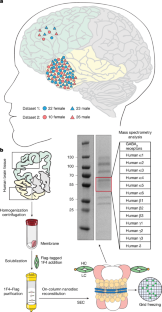2025-01-22 スウォンジー大学
<関連情報>
- https://www.swansea.ac.uk/press-office/news-events/news/2025/01/study-shows-eye-care-in-local-clinics-cuts-patient-wait-times-and-optimises-nhs-resources.php
- https://onlinelibrary.wiley.com/doi/10.1111/opo.13397
ウェールズにおける病院から地域へ プライマリ・ケアにおける血管新生AMDと緑内障の管理において、検眼医がより大きな役割を果たすことの価値とは? Hospital to community in Wales: What is the value of optometrists playing a greater role in managing neovascular AMD and glaucoma in primary care?
Barbara Ryan, Mari Jones, Pippa Anderson, Rhiannon Reynolds, Rebecca E. M. Nicholls, Katherine Cullen, Mark Davies, Rachel North, Bablin Molik, Carolyn Wallace
Ophthalmic and Physiological Optics Published: 10 October 2024
DOI:https://doi.org/10.1111/opo.13397

Abstract
Purpose
To evaluate the value of enhanced optometric services for managing neovascular age-related macular degeneration (nAMD) and glaucoma in primary care optometry services, instead of hospital eye services (HES).
Methods
Seven enhanced optometric service pathways in primary care in Wales were assessed with a mixed-methods approach: three for nAMD and four for glaucoma. The methods were a patient-related experience measure (PREM), a Realist Review and Evaluation involving both patients and staff, a discrete event simulation model estimating the economic impact of the pathways and a workforce survey of optometrists to gauge capability and capacity.
Results
Patient-related experience measure responses (802) indicated that primary care experience was comparable to that of HES. Utilising enhanced optometric services in primary care resulted in reduced wait times compared with HES, with suspected nAMD shortened to 4–5 days and glaucoma monitoring to 5 days. Waiting lists were dramatically reduced with primary care-based services to just three people waiting for nAMD and five for glaucoma, compared with 216 and 5691 people, respectively, in HES. Consultant ophthalmologist time was reduced from 57% to 15%–16% for nAMD services and from 48% to 22%–23% for glaucoma services. Integrating enhanced optometric services into primary care incurred a similar cost. The workforce survey confirms that optometrists possess the skills and qualifications and are willing to deliver these enhanced optometric services. The Realist Review and Evaluation revealed that clear patient communication, effective coordination and strong interprofessional communication between optometrists and ophthalmologists along with a shared electronic record are crucial to the success of this change.
Conclusion
Providing enhanced optometric services in primary care for nAMD and glaucoma brings substantial benefits for the UK National Health Service and patients, including reduced waiting times, waiting lists and released HES capacity. The success of this transition hinges on clear patient communication, administrative co-ordination and effective interprofessional communication.
Key points
- Integrating highly qualified primary care optometrists into the patient referral and monitoring pathways can significantly reduce wait times for neovascular age-related macular degeneration and glaucoma, which could reduce the risk of sight loss.
- Shifting more responsibilities to primary care optometrists frees up consultant ophthalmologist time, allowing them to focus on more complex cases, thereby optimising the use of healthcare resources.
- Primary care-based optometric services are comparable to hospital eye services in terms of patient experience and are a financially viable and scalable solution to help manage the increasing number of people with eye disease.


